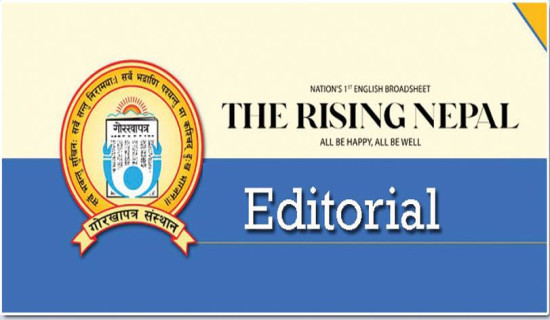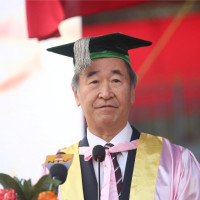- Friday, 26 December 2025
New Impetus To Boost Pokhara Tourism
Recognising tourism as one of key sectors contributing to the economy, even the local governments have begun giving top priority to this potential sector. About one year after the announcement of the Visit Bharatpur Year 2024, the Pokhara Visit Year 2025 was launched on February 15 amidst a grand ceremony. The Pokhara Metropolitan City, in coordination with Nepal Tourism Board (NTB) and the private sector, has started the year-round tourism campaign with a target of welcoming 2 million tourists. It is, however, saddening to note that Finance Minister Bishnu Prasad Paudel and Mayor of Pokhara Metropolitan City Dhanaraj Acharya have sustained burn injuries during the inauguration of the event as hydrogen-filled balloons exploded. They have been undergoing treatment at Burn Hospital based in Kirtipur.
Prime destination
The local government aims to attract both internal as well as international tourists into Pokhara by introducing a myriad of packages. The federal and provincial governments, the NTB and the private sector are also joining force to promote Pokhara as an important tourist destination. The beautiful ‘Lake City’ was declared as Nepal’s ‘Tourism Capital’ by the Gandaki provincial government and the Pokhara Metropolitan City on March 17 last year. Also dubbed as one of the gateways to the world-famous Annapurna Region, Pokhara is an appealing tourist destination. The local people’s great hospitality, tourism-friendly environment, monuments and green forests have upgraded Pokhara’s destination image. Besisahar of Lamjung district is another point from where a journey to the Annapurna Circuit trek begins. Pokhara has been a prime destination among nature lovers, adventurers and those interested in the culture and lifestyle of the people. As the nation’s second-largest city, Pokhara has been a main tourist destination since the early 1950s when the tourism business, especially mountaineering activities, commenced in Nepal.
The picturesque lakes such as Phewa Lake, Begnas Lake and Rupa Lake have been a major tourist draw in the city. Boating on the Phewa Lake and Begnas Lake is an additional tourism activity there. With the availability of cable car facility and different adventure activities like paragliding, bungee jumping, zip-flying, the city has been a hotpot of tourists having varied tastes and interests. Pokhara and its vicinity areas have witnessed a huge investment in hotels, resorts and restaurants over the years. Although there is no exact data indicating the number of tourists visiting Pokhara annually, an estimated 40-45 per cent of the total number of travellers entering Nepal make their trip to the city every year.
In 2024, the country played host to about 1.15 million foreign tourists. Nepal is expected to receive more tourists this year considering a rising trend in global arrivals. With moderate climate and serenity of Pokhara, more travellers, including domestic visitors, are found showing their keen interest in visiting there. The city has also been a preferred destination among Chinese and Indian travellers. Local tourism entrepreneurs estimate that some 400,000 foreign travellers visit Pokhara annually. According to them, internal tourists account for about 30 per cent of the annual hotel occupancy in Pokhara. The local government is planning to join hands with the NTB and other relevant stakeholders so as to maintain accurate data on the number tourists visiting the city annually. It has started deploying teams to different land routes through which tourists enter Pokhara in order to maintain records.
The encroachment upon the fragile Phewa Lake has posed threat to this important natural heritage. A growing level of air pollution is another problem. The local government must pay due attention towards tackling these issues. It also needs to make extra efforts to create more tourism products and attractions so as to increase the stay of tourists there. It is necessary for the authorities to introduce short-term, mid-term and long-term plans in order to develop Pokhara into a much sought-after tourist destination.
Two years have already passed since the inauguration of the Pokhara Regional International Airport (PRIA). But the much-awaited infrastructure has yet to come into operation in a full swing. The airport was constructed with a loan assistance of around US$216 million from China. Only few chartered flights have so far served this airport. Though the federal, provincial and local governments have tried their best to bring this new aviation infrastructure into operation, no significant progress has been made as of now.
However, Himalayan Airlines has announced its plan to start operating its scheduled flights to Lhasa from Pokhara from coming March. The authorities concerned must keep making efforts to utilise this airport in order to grow tourism in and around Pokhara. The Gautam Buddha International Airport (GBIA), based in Bhairahawa, was also not in operation for months after its inauguration on May 2022. However, this airport has now been in operation with few international airlines serving it.
Connectivity
The authorities are now required to focus their endeavours on launching flights from Pokhara to various other cities like Nepalgunj, Bhairahawa, Janakpur and Biratnagar. Tourism can grow in all these cities only when there is increased air access. But it is essential to ensure an air safety. It is also needed to have better road connectivity for tourism to develop. Since the task of expanding the Prithvi Highway has not been completed, travellers have been facing an inconvenience. The existing trend of delaying in building roads or expanding them must stop.
(The author is a former deputy executive editor of this daily.)















